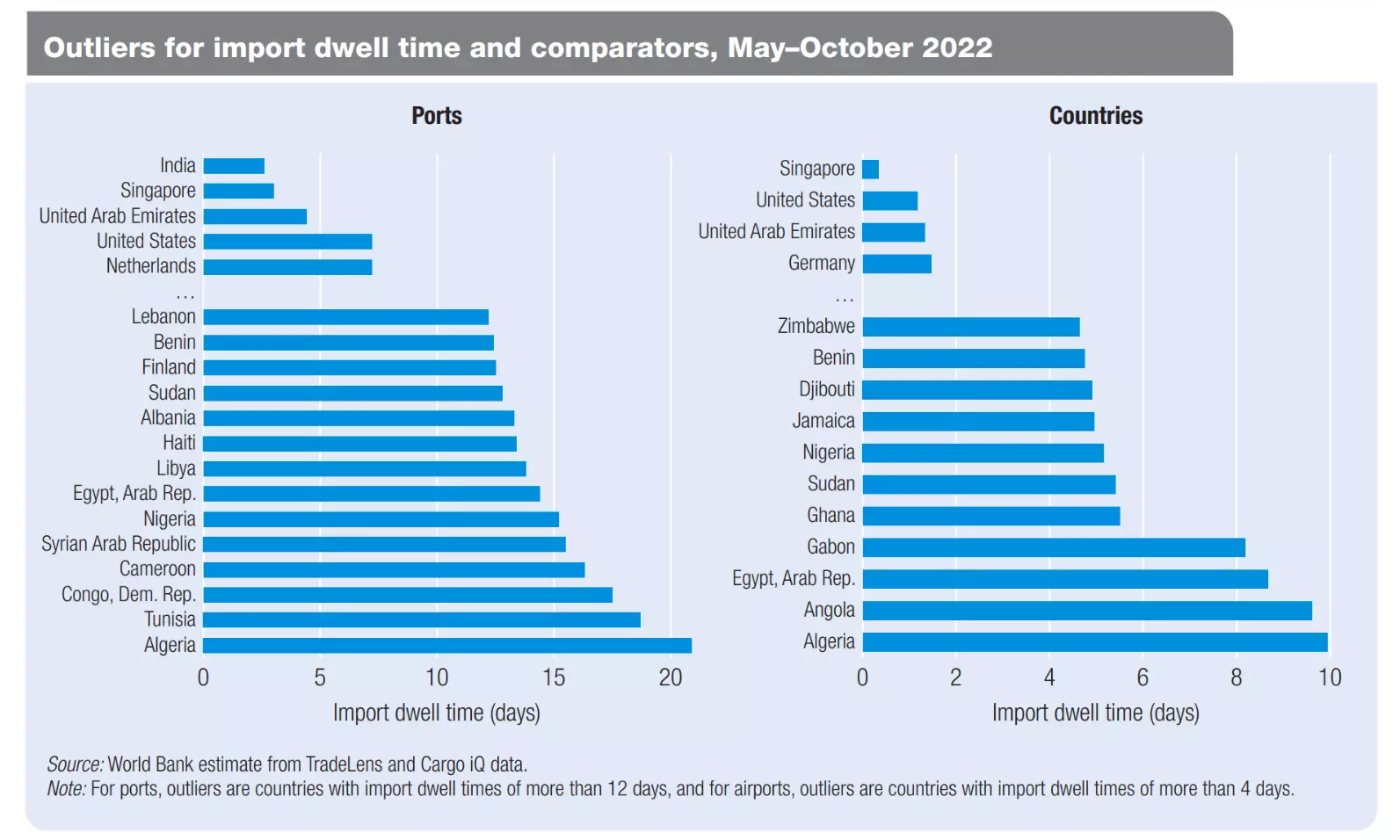India jumps 6 places to 38 in global logistics performance Index

The World Bank released its 2023 Logistics Performance Index (LPI) report, a measure of countries’ ability to move goods across borders with speed and reliability and India ranked 38 up from 44 in 2018, 35 in 2016, 54 in 2014 and 46 in 2012.
India also registered 3.4 LPI score which is a median of six different scores including, customs, infrastructure, international shipments, logistics competence & quality, timelines and tracking & tracing.
The Index lists India among the top 13 lower-middle-income LPI scorers in 2023. India maintained to be in the list for last four rankings since 2012.
The seventh edition of Connecting to Compete, the Logistics Performance Index (LPI) report comes after three years of unprecedented supply chain disruptions during the Covid-19 pandemic, when delivery times soared. The LPI, which covers 139 countries, measures the ease of establishing reliable supply chain connections and the structural factors that make it possible, such as the quality of logistics services, trade- and transport-related infrastructure, and border controls.
The report noticed reduced dwell time in Indian ports compared to developed nations and gave the example of the introduction of cargo tracking in the eastern port of Visakhapatnam where dwell time fell from 32.4 days in 2015 to 5.3 days in 2019.
“Since 2015, the government of India has invested in trade-related soft and hard infrastructure connecting port gateways on both coasts to the economic poles in the hinterland. Technology has been a critical component of this effort, with implementation under a public-private partnership of a supply chain visibility platform, which contributed to remarkable reductions in delays. NICDC Logistics Data Services Limited applies radio frequency identification tags to containers and offers consignees end-to-end supply chain tracking. Implementation started in 2015 on the Indian east coast and was generalized in 2020,” reads the report.
“Logistics are the lifeblood of international trade, and trade in turn is a powerful force for economic growth and poverty reduction,” said Mona Haddad, global director for trade, Investment, and Competitiveness at the World Bank. “The Logistics Performance Index helps developing countries identify where improvements can be made to boost competitiveness.”
On average across all potential trade routes, 44 days elapse from the time a container enters the port of the exporting country until it leaves the destination port, with a standard deviation of 10.5 days. That span represents 60 percent of the time it takes to trade goods internationally.
According to LPI 2023, end-to-end supply chain digitalization, especially in emerging economies, is allowing countries to shorten port delays by up to 70% compared to those in developed countries. Moreover, demand for green logistics is rising, with 75 percent of shippers looking for environmentally friendly options when exporting to high-income countries.
“While most time is spent in shipping, the biggest delays occur at seaports, airports, and multimodal facilities. Policies targeting these facilities can help improve reliability,” said Christina Wiederer, Senior Economist with the World Bank Group’s Macroeconomics, Trade & Investment Global Practice and the report’s co-author.
Such policies include improving clearance processes and investing in infrastructure, adopting digital technologies, and incentivizing environmentally sustainable logistics by shifting to less carbon-intensive freight modes and more energy-efficient warehousing.



